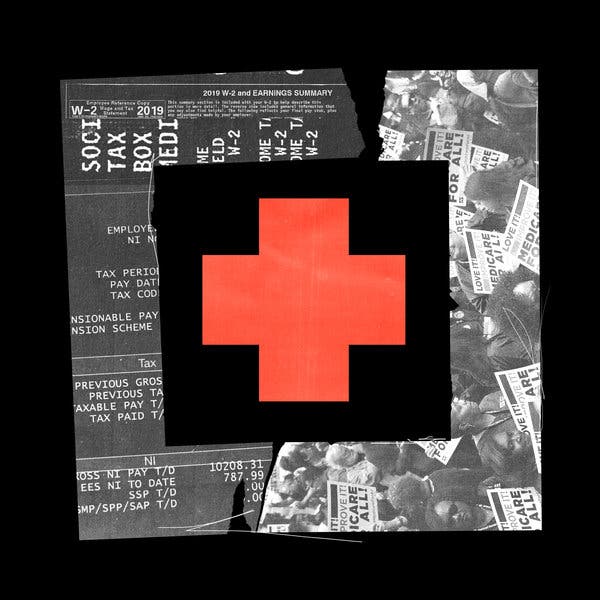
What is hospice care? Hospice care is an alternative to traditional care. It focuses on pain relief and attending to patients' spiritual and emotional needs. It places a high importance on quality of living and comfort. While this stage is often called "palliative care patient", patients may also be eligible for this type care at other times. A hospice nurse can help the patient find the best care for his or her situation, and will discuss various options for assisting with the decision-making process.
Inpatient respite care
Many benefits can be derived from inpatient respite services in hospice care. Those who give care to a loved one often need time to heal, gain perspective, and focus on their own well-being. Caring for someone you love requires dedication and emotional commitment. It is vital to find time to escape for respite. ARCH National Respite Network says caregivers should have meaningful and frequent respite to reduce stress levels and improve quality of living.
Patients who require a short-term respite from their daily duties can use hospice respite care. It's meant to give caregivers a break. Patients often report feeling more connected to their caregivers, as respite is so essential. Inpatient respite can also help caregivers maintain their personal relationships and regain independence.

Hospice care at home
It is often questioned whether hospice care is right for everyone by high-profile supporters. However, for some people, home hospice care is the only option. These people don't want the expense of a high-cost facility or death in a hospital. Sea, who lost to prostate cancer in 1993 with her husband, is skeptical about the service. They wish to avoid the financial and emotional burden that comes with caring for someone with a terminal illness.
Medicare, Medicaid, most private insurance plans, and many other policies cover home hospice care. Medicare no longer covers curative treatments for hospice patients, but continues to cover home hospice needs. And if a patient chooses to stop their hospice care, they can stop it at any time. Hospice care at home can be an important part of the care your loved one receives. It doesn't matter if it's right or not, it is important that you understand how home hospice works and what it can do for you loved one.
Inpatient palliative care
Patients may receive inpatient palliative care for chronic pain, or they can choose continuous home care to help with symptom management. Inpatient respite care is short-term inpatient care that gives caregivers time to attend to other matters. Inpatient palliative medicine is for short-term pain control and symptom relief. Hospice patients must receive at most eight hours of care during the final 60 days of their lives.
Hospice staff provides inpatient palliative services at the inpatient level. It helps patients cope with the end of life by providing comfort care and treating physical, psychological, and social symptoms. The goal of palliative care is to allow patients to enjoy the time they have left, as well as make important decisions that will affect their quality of life. Patients can be discharged home if their condition improves.

Inpatient nursing home
Individuals who are unable to continue living at home but need assistance with daily activities can receive inpatient hospice care. To provide inpatient care, hospice nurses are available at the nursing home each day. The family usually pays for room, board, and hospice services. Medicare and Medicaid cover hospice care. Patients also receive additional care from hospice staff. There are many benefits to hospice care in an hospital setting. Before you decide whether hospice is right to choose for yourself or your loved ones, here are some considerations.
A hospice provider is essential because the patient's care might differ from that of an inpatient. Selecting hospice is about making certain decisions and incorporating other providers' care into the overall plan. A hospice interdisciplinary team determines the patient's POC, and creates a care plan. This plan should be tailored to the patient's needs and wishes. To give the best care possible, hospice providers need to be familiarized with eachother's regulations.
FAQ
What are the different types of health insurance?
There are three main types:
-
Private health insurance covers all costs related to your medical care. This type of insurance is typically purchased directly through private companies so that you only pay monthly premiums.
-
While public insurance covers the majority cost of medical care there are restrictions and limitations. For example, public insurance will only cover routine visits to doctors, hospitals, labs, X-ray facilities, dental offices, prescription drugs, and certain preventive procedures.
-
You can use medical savings accounts (MSAs), to save money for future healthcare expenses. The funds are held in a special account that is separate from any other kind of account. Most employers offer MSA programs. These accounts are tax-free, and they accumulate interest at rates similar to bank savings accounts.
What is an infectious disease?
An infectious disease is caused either by bacteria, viruses, parasites or both. Infectious diseases spread quickly through close contact. Mumps, rubella (German Measles), whooping cough, rubella (German Measles), measles and mumps are some examples.
What should I know about immunizations?
Immunization refers the process of activating an immune response in response to a vaccine. The body responds to the vaccine by making antibodies (immunoglobulins) that protect against infection.
What is the distinction between the health service and the health system?
Health systems can be more than just providing healthcare services. They cover all aspects of life, from education to employment to housing and social security.
Healthcare services, however, are focused on providing medical treatment for specific conditions, such as diabetes or cancer.
They may also refer the provision of generalist primary health care services by community-based professionals working under an NHS hospital trust.
How can I become a creative professional in the field of health?
You have many options to become a creative healthcare professional. Some people start their careers as students while others work in engineering or business.
Some people choose to take a course in a particular topic, such as leadership, management, and health policy. Some choose to elective courses that examine different perspectives on health or health care.
No matter what pathway you choose, there are many ways to learn about topics in health and healthcare. These include readings, group discussions and assignments as well lectures. There are workshops, conferences, as well as seminars.
You will be able to communicate with patients, colleagues, and clients once you've completed the program.
You may even pursue a doctorate.
What are the various health care services available?
A health care provider is a medical institution that offers healthcare services for patients. An example of a healthcare service is a hospital. A hospital typically includes several departments like the emergency department and intensive care unit. It also has pharmacy and outpatient clinics.
What are the primary goals of a health care system?
Healthcare systems should have three primary goals: Provide affordable healthcare, improve health outcomes and reduce costs.
These goals were incorporated into the framework Triple Aim. It is based on research by the Institute of Healthcare Improvement (IHI). IHI published this in 2008.
This framework is meant to show that if we concentrate on all three goals together, then we can improve each goal without compromising the other.
They are not competing with each other. They support each others.
For example, improving access to care means fewer people die due to being unable to pay for care. This helps to lower the overall cost of healthcare.
It is also important to improve the quality and cost of care. It also improves outcomes.
Statistics
- For instance, Chinese hospital charges tend toward 50% for drugs, another major percentage for equipment, and a small percentage for healthcare professional fees. (en.wikipedia.org)
- The healthcare sector is one of the largest and most complex in the U.S. economy, accounting for 18% of gross domestic product (GDP) in 2020.1 (investopedia.com)
- About 14 percent of Americans have chronic kidney disease. (rasmussen.edu)
- Price Increases, Aging Push Sector To 20 Percent Of Economy". (en.wikipedia.org)
- Consuming over 10 percent of [3] (en.wikipedia.org)
External Links
How To
What are the four Health Systems?
The healthcare system is a complex network of organizations such as hospitals, clinics, pharmaceutical companies, insurance providers, government agencies, public health officials, and many others.
This infographic was created to help people understand the US healthcare system.
These are some of the most important points.
-
Healthcare spending is $2 trillion annually, representing 17% of the GDP. That's almost twice the size of the entire defense budget!
-
Medical inflation was 6.6% in 2015, higher than any other category of consumer.
-
Americans spend 9% on average for their health expenses.
-
As of 2014, there were over 300 million uninsured Americans.
-
The Affordable Care Act (ACA) has been signed into law, but it isn't been fully implemented yet. There are still significant gaps in coverage.
-
The majority of Americans think that the ACA needs to be improved.
-
The US spends more than any other nation on healthcare.
-
If every American had access to affordable healthcare, the total cost would decrease by $2.8 trillion annually.
-
Medicare, Medicaid, private insurers and other insurance policies cover 56%.
-
The top 3 reasons why people don't get insured include not being able to afford it ($25 billion), not having enough time to look for insurance ($16.4 billion), and not knowing about it ($14.7 billion).
-
HMO (health management organization) and PPO(preferred provider organisation) are the two types of plans.
-
Private insurance covers most services, including doctors, dentists, prescriptions, physical therapy, etc.
-
The public programs cover outpatient surgery as well as hospitalizations, nursing homes, long term care, hospice, and preventive health care.
-
Medicare is a federal program providing senior citizens health coverage. It covers hospital stays, skilled nursing facilities stays, and home care visits.
-
Medicaid is a joint federal-state program that provides financial assistance for low-income individuals or families who earn too little to qualify for other benefits.